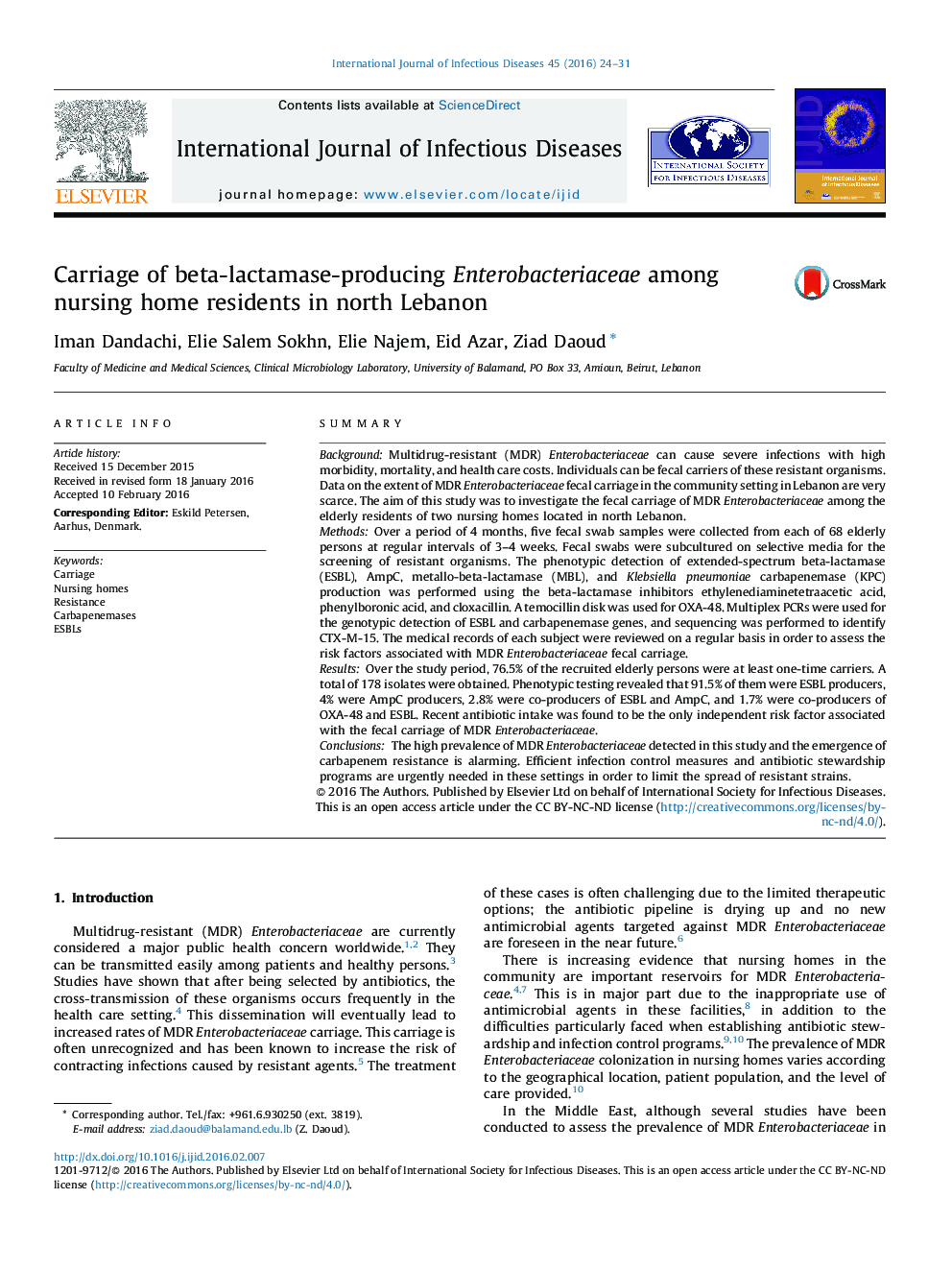| Article ID | Journal | Published Year | Pages | File Type |
|---|---|---|---|---|
| 3361749 | International Journal of Infectious Diseases | 2016 | 8 Pages |
•The prevalence of fecal carriage of multidrug-resistant (MDR) Enterobacteriaceae among elderly nursing home residents is noteworthy and shows the importance of nursing homes as reservoirs of resistance in the Lebanese community..•The fecal carriage of MDR Enterobacteriaceae among nursing home residents is dynamic and changes over time.•The emergence of carbapenem resistance in the Lebanese community is alarming.
SummaryBackgroundMultidrug-resistant (MDR) Enterobacteriaceae can cause severe infections with high morbidity, mortality, and health care costs. Individuals can be fecal carriers of these resistant organisms. Data on the extent of MDR Enterobacteriaceae fecal carriage in the community setting in Lebanon are very scarce. The aim of this study was to investigate the fecal carriage of MDR Enterobacteriaceae among the elderly residents of two nursing homes located in north Lebanon.MethodsOver a period of 4 months, five fecal swab samples were collected from each of 68 elderly persons at regular intervals of 3–4 weeks. Fecal swabs were subcultured on selective media for the screening of resistant organisms. The phenotypic detection of extended-spectrum beta-lactamase (ESBL), AmpC, metallo-beta-lactamase (MBL), and Klebsiella pneumoniae carbapenemase (KPC) production was performed using the beta-lactamase inhibitors ethylenediaminetetraacetic acid, phenylboronic acid, and cloxacillin. A temocillin disk was used for OXA-48. Multiplex PCRs were used for the genotypic detection of ESBL and carbapenemase genes, and sequencing was performed to identify CTX-M-15. The medical records of each subject were reviewed on a regular basis in order to assess the risk factors associated with MDR Enterobacteriaceae fecal carriage.ResultsOver the study period, 76.5% of the recruited elderly persons were at least one-time carriers. A total of 178 isolates were obtained. Phenotypic testing revealed that 91.5% of them were ESBL producers, 4% were AmpC producers, 2.8% were co-producers of ESBL and AmpC, and 1.7% were co-producers of OXA-48 and ESBL. Recent antibiotic intake was found to be the only independent risk factor associated with the fecal carriage of MDR Enterobacteriaceae.ConclusionsThe high prevalence of MDR Enterobacteriaceae detected in this study and the emergence of carbapenem resistance is alarming. Efficient infection control measures and antibiotic stewardship programs are urgently needed in these settings in order to limit the spread of resistant strains.
